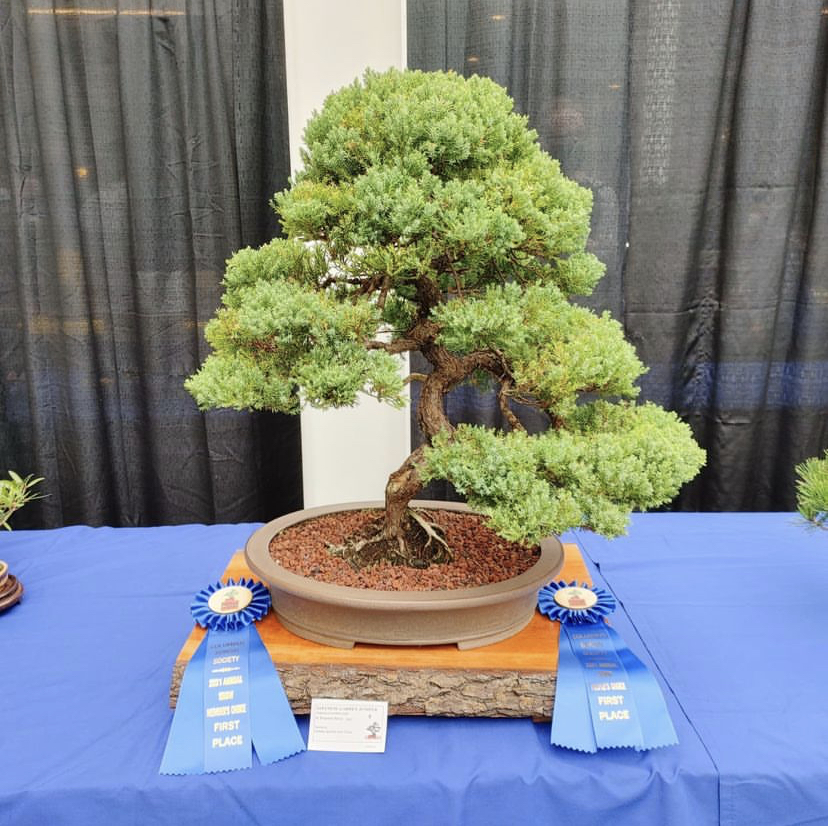Columbus Bonsai Society celebrates 50 years

About 30 years ago, Mark Passerrello walked into his first meeting of the Columbus Bonsai Society. As the club was made up of mostly older men, Passerrello wasn’t sure they would accept his youth, pierced ears, and long hair.
Lucky for him, bonsai is for everyone.
Now president of the society, Passerrello wants to not only educate others in the art of bonsai, but also open the practice up to a broader audience in Columbus.
“Community is an important word to me,” he said. “The idea is to make the society more welcoming. When I go to bonsai events, a lot of the time I see dudes just like me—thick around the middle with gray beards—but we also have a few women on the board and more young people getting involved everyday.”
While it’s the same club he first joined some 30 years ago, Passarrello said it’s even better now.
BROUGHT TO YOU BY
Passerrello has always been a plant person, but he also has a real interest in Japanese culture and arts.
Bonsai is an art form derived from ancient Chinese horticulture and developed further in Japan. By definition, bonsai is a potted plant pruned and manipulated into a creative and desired shape. The practice takes skill, technique, and lots of patience.
Contrary to popular belief, a bonsai tree or plant isn’t one species. Passerrello said many people use bonsai-ing as a verb as well as a noun, meaning you can bonsai most any plant into a small container and foster it into a matured appearance.
“Bonsai is a collection of techniques and mindset,” Passerrello said. “You can make most living plants into a bonsai. You can take something like boxwoods[a] and junipers or a ficus, and you can turn that into a bonsai pretty easily.”
Passerrello became fascinated with bonsai when he and his college girlfriend lived in a studio apartment in Miami.
“We fantasized [about] what we would do if we had more space once we got out of school and got settled,” he said. “That’s when I discovered bonsai and began reading library books about it.”
A year later, after moving to Columbus, Passerrello ordered a few plants and all the supplies needed to start a bonsai garden. He then saw an article in the newspaper for the Columbus Bonsai Society and called them up to see exactly how he could get involved.
Thirty years and a half a dozen board positions later, Passerrello is the president of the society.
“Our mission is to be an educational organization and to promote the art and craft of bonsai,” he said. “We host guest artists, talk about a range of topics, talk about techniques, and showcase presentations.”
The club generally meets the third Sunday of each month at the Franklin Park Conservatory and Botanical Gardens. But the group has a presence at tons of other events such as native plant sales, workshops, the annual Cherry Blossom Festival, and more. Every spring, the society partakes in Arbor Day events around the tristate area. On Sept. 24, the group will celebrate its 50th anniversary at the Dawes Arboretum.
Bonsai is fairly popular nowadays and can be found at most big box gardening stores. Passerrello advised those who want to start their own bonsai to be particular about the plants and supplies they choose.
“One way to just start is to buy something inexpensive and keep it alive, which is already a challenge,” he said. “You then can shape it and use techniques to grow it into a bonsai.”
Local plant sales and conservatories are great assets to get you started. It’s important to start with a shallow pot, wide enough to contain not only the plant but also any additional decor in the miniature landscape. No matter what type of plant you have, when you remove it from its nursery container to transplant into a new pot, cut off the bottom two-thirds of the root ball. Then rake through the surface soil to expose some roots. Moisten everything using a spray bottle.
Maintaining a bonsai tree requires different techniques and levels of attention. You’ll need to remove dead branches and temporarily wrap wire around parts you want to manipulate. Water only when the soil dries, and fertilize throughout early spring to mid-fall.
“Bonsai is a way of looking at things,” Passerrello said. “It’s a way of growing and a way of seeing.”
BROUGHT TO YOU BY




